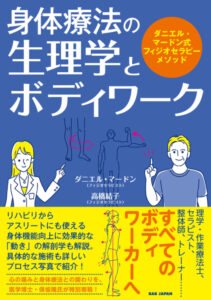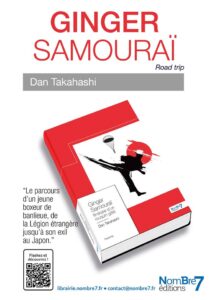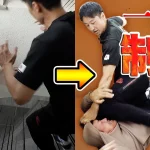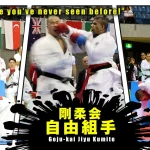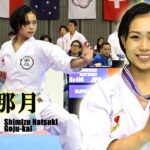【Exploring the spirit of the Ryukyu】Series 1 (HIDEN 05/2023)「Hokama Tetsuhiro SENSEI」
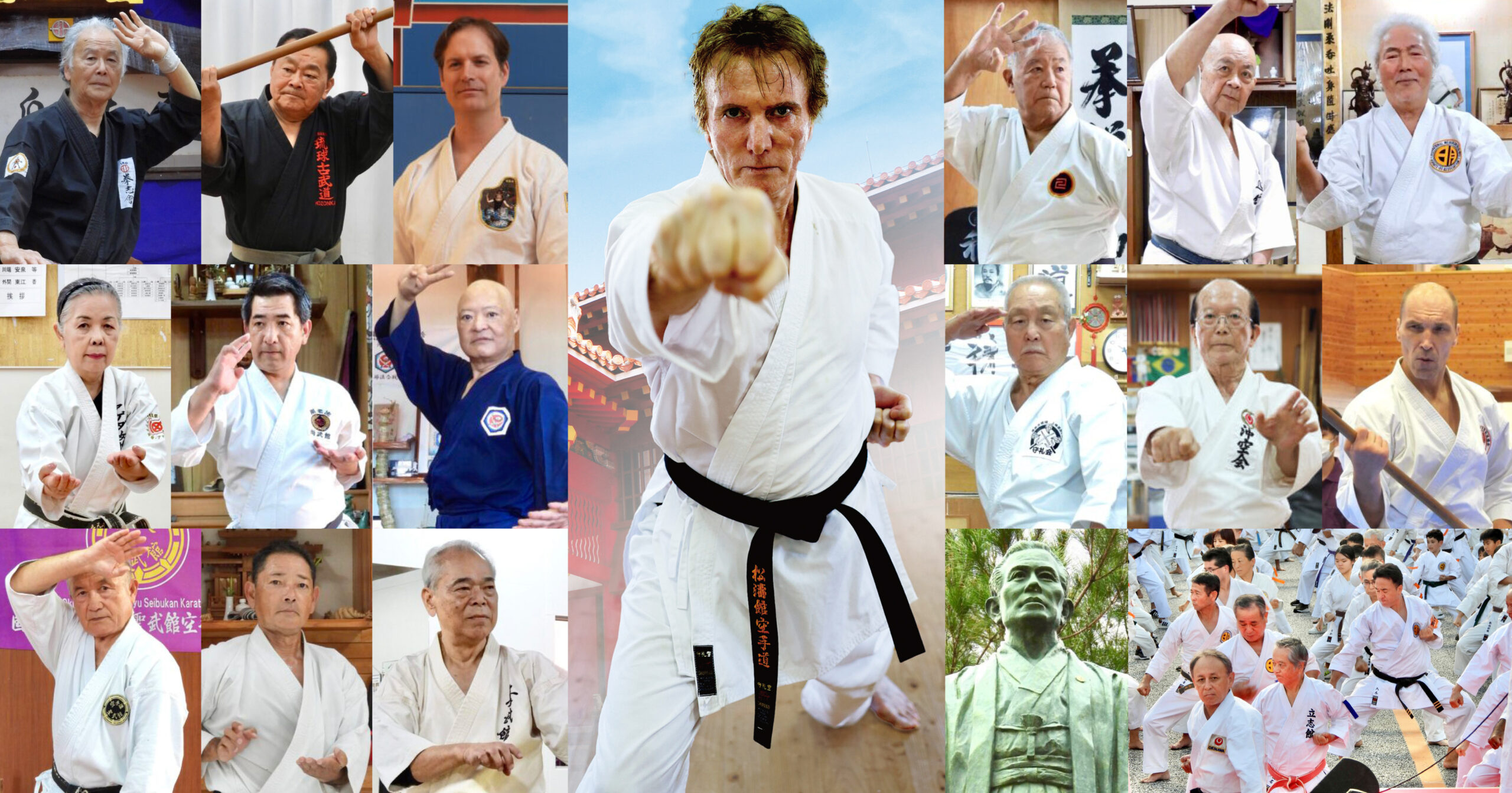 New series “Exploring the spirit of the Ryukyu”!
New series “Exploring the spirit of the Ryukyu”!
Pilgrimage to Karate-Land with Daniel Mardon, the Karateka-Therapist!
VISIT OF TRADITIONAL OKINAWA DOJO
Karate is gaining such a popularity as a global sport, that it was included as an additional event at the Tokyo 2020 Olympics.
However, in Okinawa -the birthplace of Karate-, there are still Masters who practice traditional techniques with the ancient spirit.
In this new series, Daniel Mardon, a long-time Martial-artist and Physiotherapist living in Okinawa, is visiting, just for us, some local Dojo and explores the spirit of Okinawa karate!
Interview/Text ◎Daniel Mardon. Photography/Translation ◎Yuko Takahashi
-DOJO 1- Hokama Tetsuhiro Sensei (10th Dan Hanshi), an Okinawan legend who has mastered both “文bun” (academics) and “武bu” (martial arts).
It is said that there are between 300 to 400 karate Dojo in Okinawa. However, I see that the number of Dojo is decreasing a lot lately! The Covid has contributed to the closing of some of them, but the aging of our great Master’s population is also a huge factor. I have pictures of ancestral Dojo and even Associations that are closed-up or are getting demolished.
In this series, we will visit some Dojo where you can feel the spirit of Okinawan karate, regardless of the size, the popularity or the style.
Hokama Sensei has multiple talents and possesses such a huge collection of rare Karate artifacts and documents, that his Dojo became in 1987, the official “Okinawa Prefectural Karate Museum” and he is therefore the Director.
A true living legend that despite his 10th degree black belt in Goju-ryu and Kobudo, stays very open to other schools and philosophies. His great openness to all comers, makes him one of the best Sensei to communicate the spirit of Okinawa to the world.
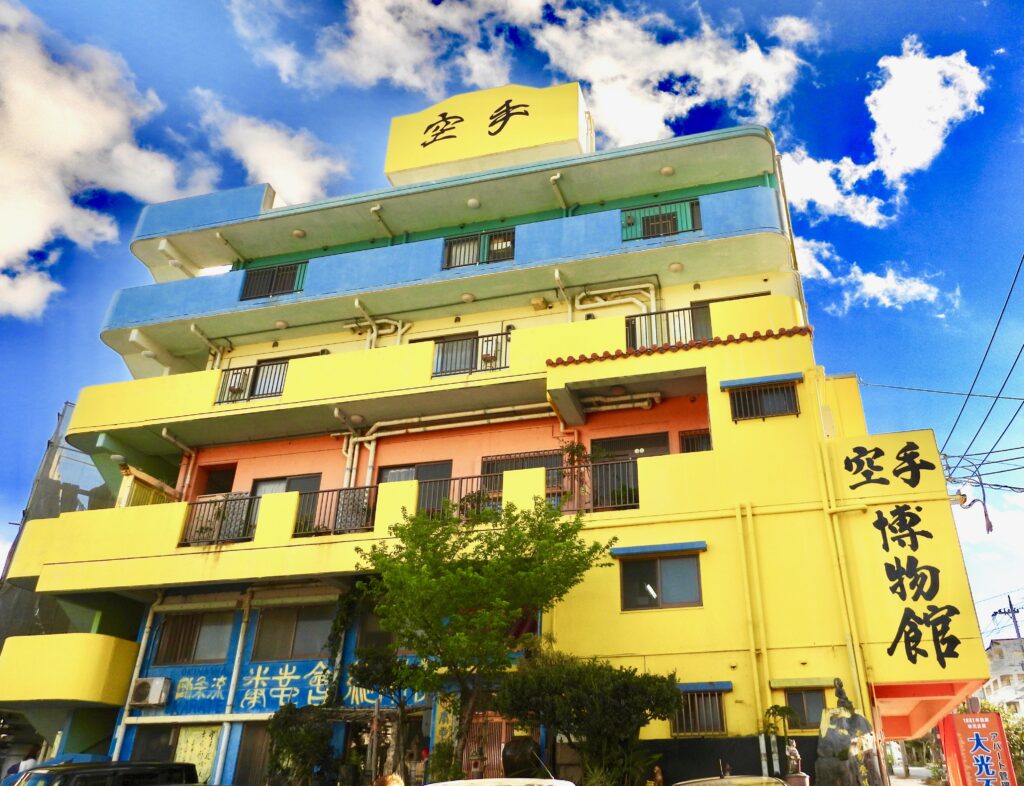
A yellow building under blue skies. Okinawa Prefectural Karate Museum and the headquarters of Goju Ryu Kenshikai Karatedo & Kobudo.
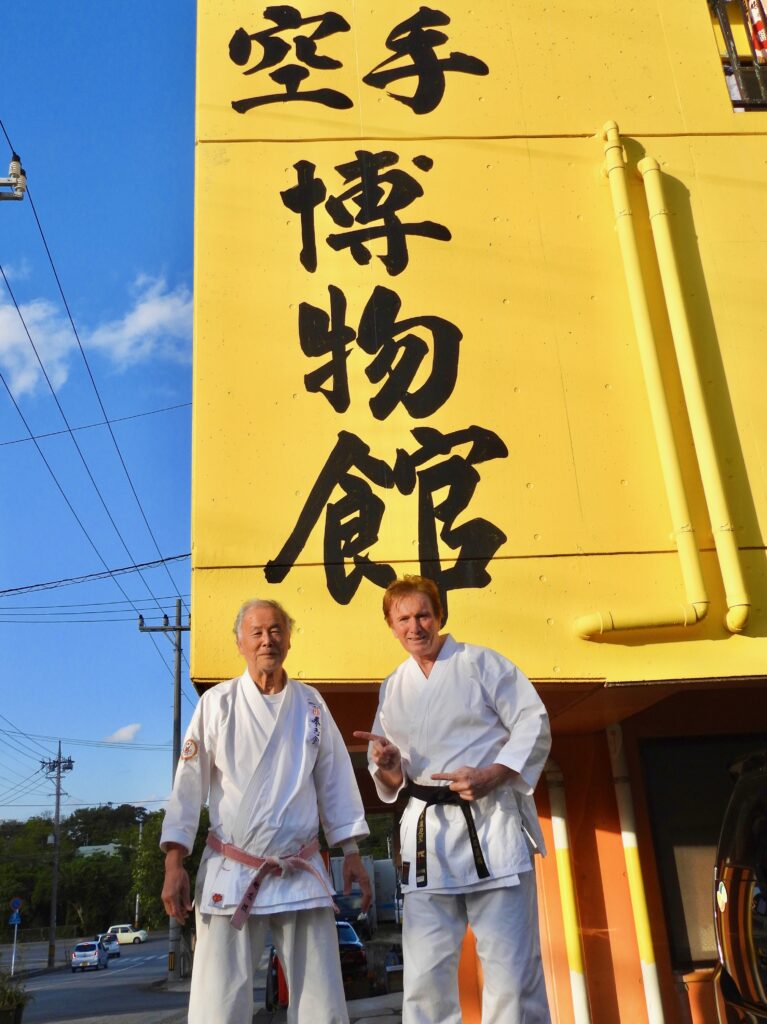
Hokama Hanshi & Daniel the K.T. standing in the street.
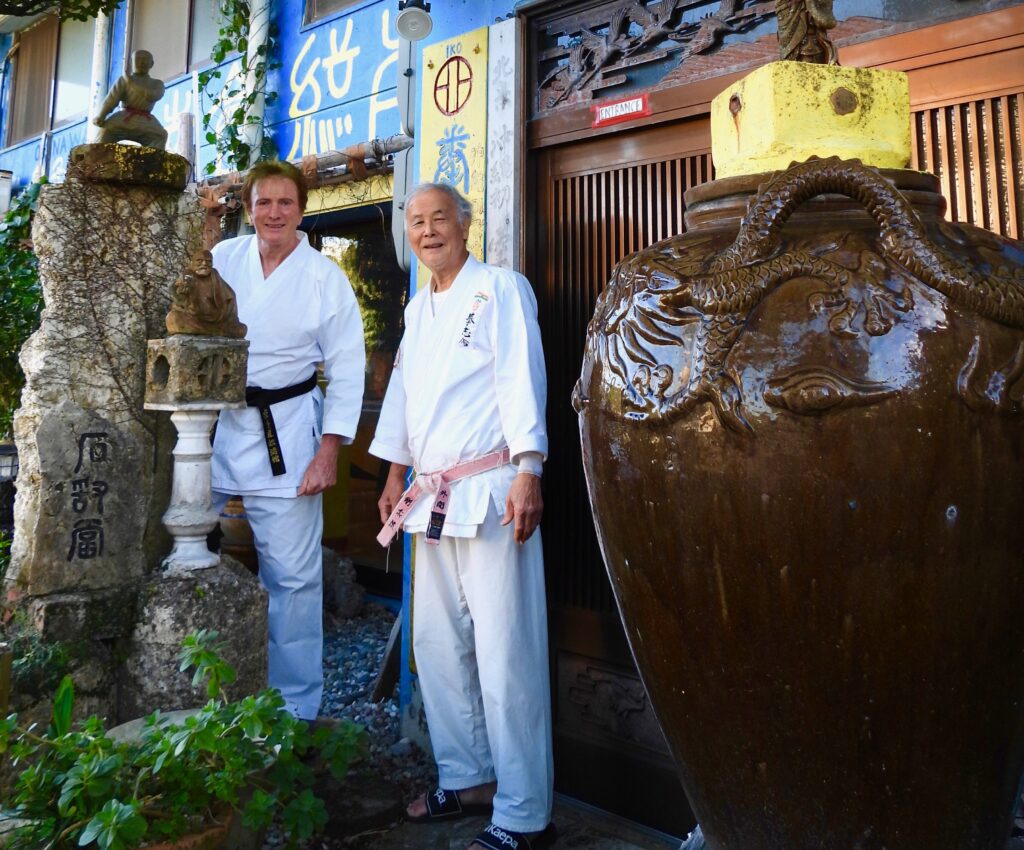
Entrance of the colorful Museum-Dojo.
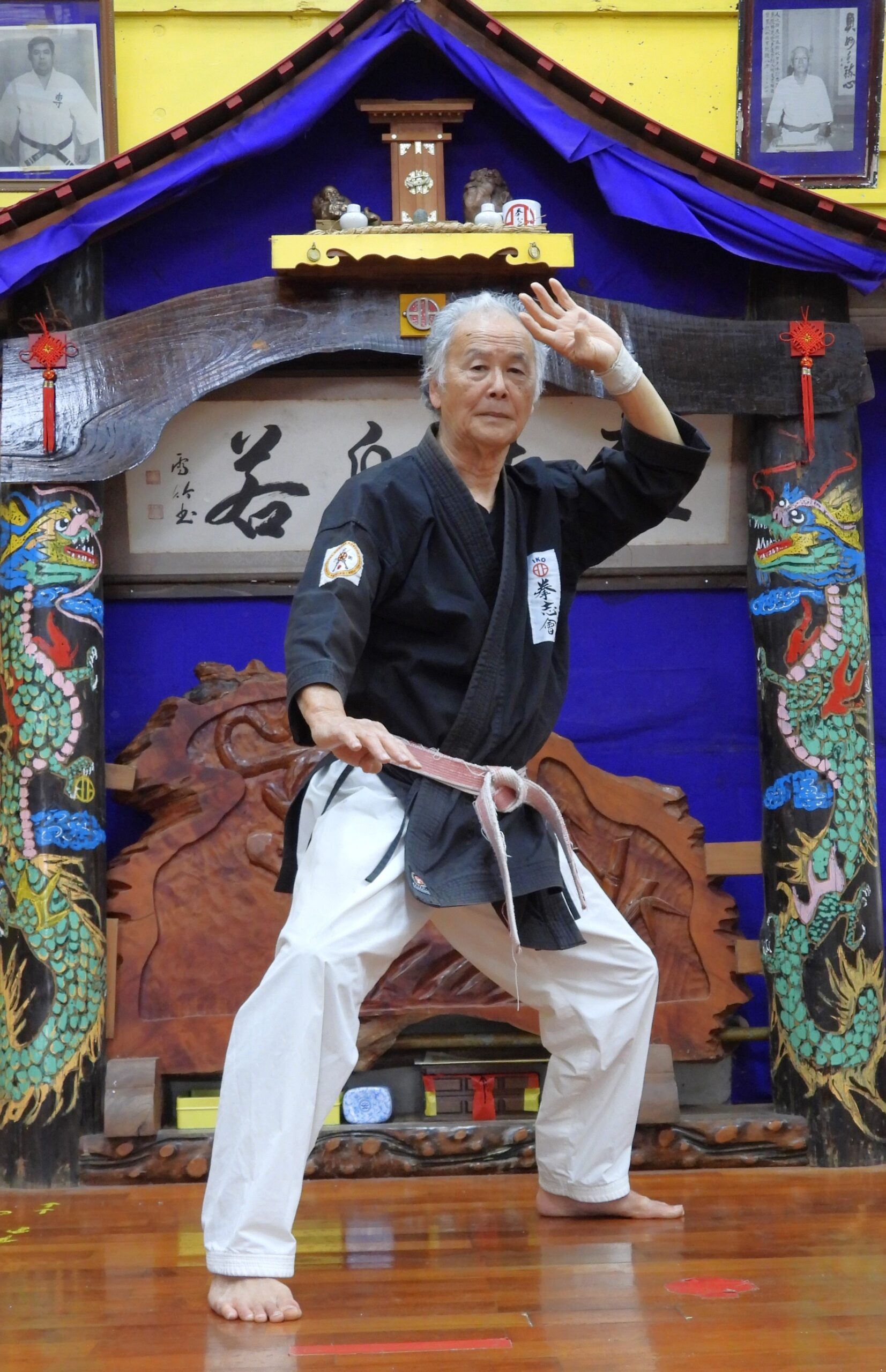
Hokama Tetsuhiro
Born in Taiwan in 1944. President of Okinawa Gojuryu Kenshikai. Hanshi 10th dan in Goju Ryu Karate and Hokama Kobudo. Curator of Okinawa Prefectural Karate Museum. Ryukyu historian and calligrapher (pen name: “Shungan”), PhD in karate, former high school teacher.
(1) What made you learn karate?
My grandfather, on my mother’s side, was Tokuyama Seiken and he practiced the Shuri-te. My mother was also practicing karate, so karate was familiar to me. I need to say that I am 78 and I was born in Taiwan during WWII. After the war, we came back to Okinawa and that is when I started to learn. I was about 6 or 7 years old, but I heard that I have been doing it since I was little.
(2) What are the characteristics of your Ryuha (dojo)?
It’s been 45 years (02/16/1978) since I made this dojo. I created the world’s first karate museum in it, 36 years ago (01/11/1987).
People from all over the world come here regardless of their style. I think there are 198 countries in the world now, and we come here from 182 countries. I myself have traveled to five continents to teach. This is an open Dojo to all.
During my seminars, we practice kata and kumite. I also teach Bo, Nunchaku, and Sai from Kobudo. Moreover, I also teach Kyushojutsu; which is how to strike the vital points and Nagewaza (throwing techniques).
I also do Shodo (calligraphy), Ryukyu History and Archaeology, which are all my specialties.
Calligraphy and karate have something in common. Calligraphy is a way to instantly concentrate and to calm down. The same goes for karate. I have learnt calligraphy from my father.
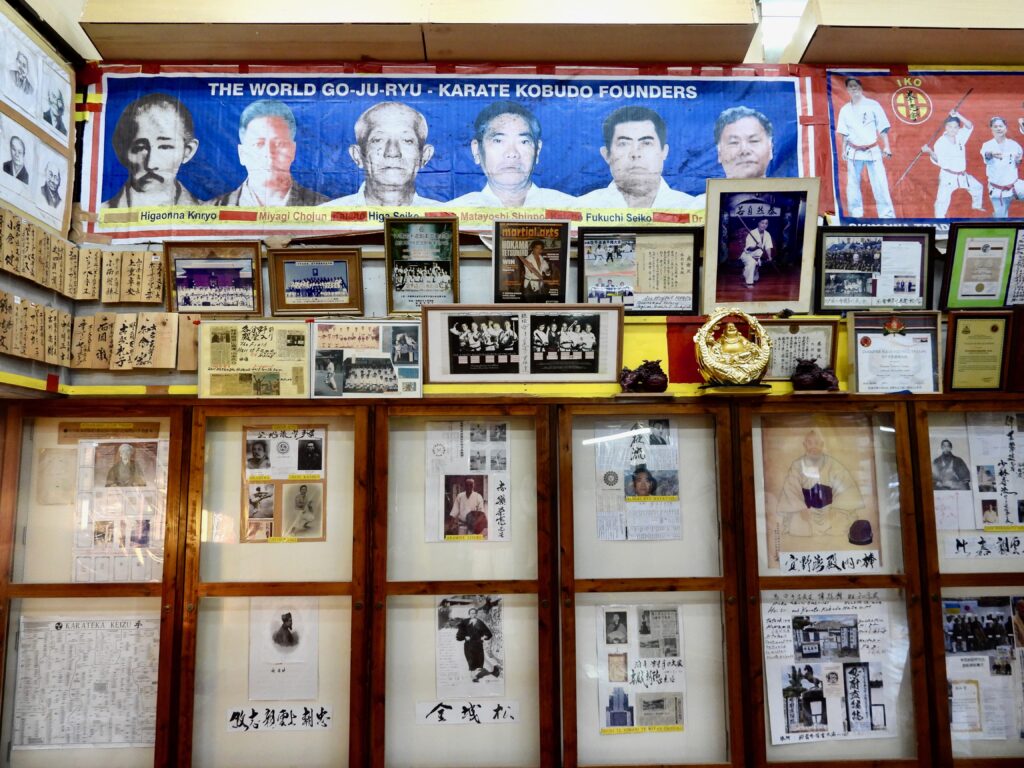
The walls of the Dojo are covered with pictures and various precious documents.
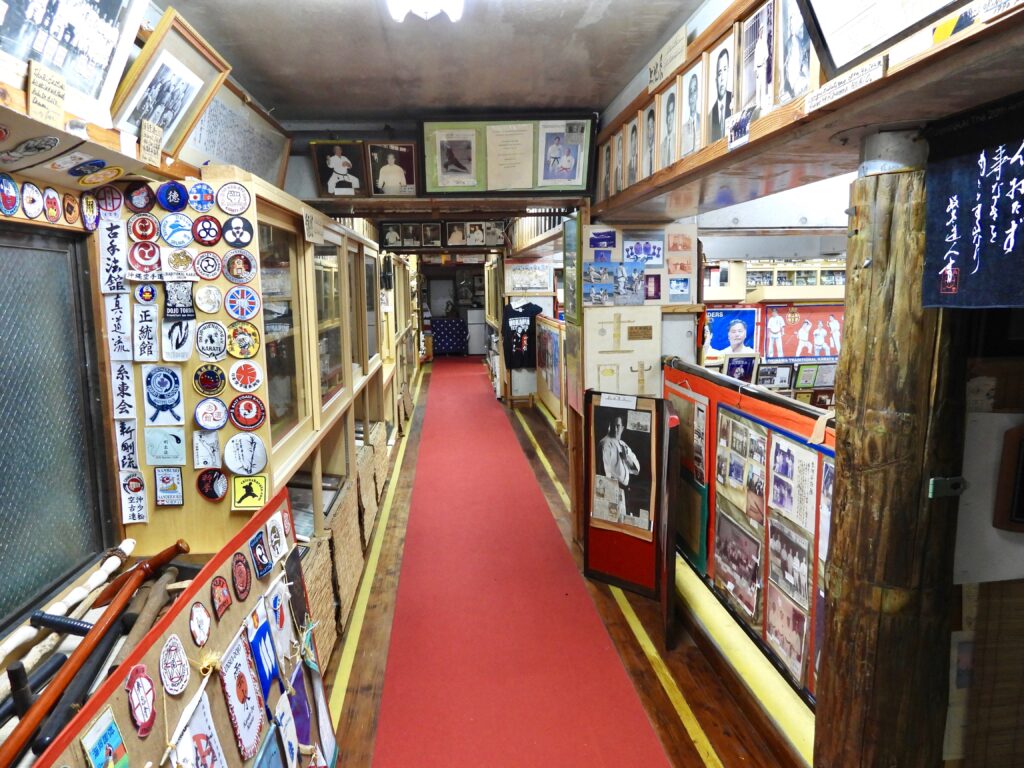
Upstairs in the Museum, the collection of objects, archives, photos is very impressive! It goes from the floor to the ceiling.
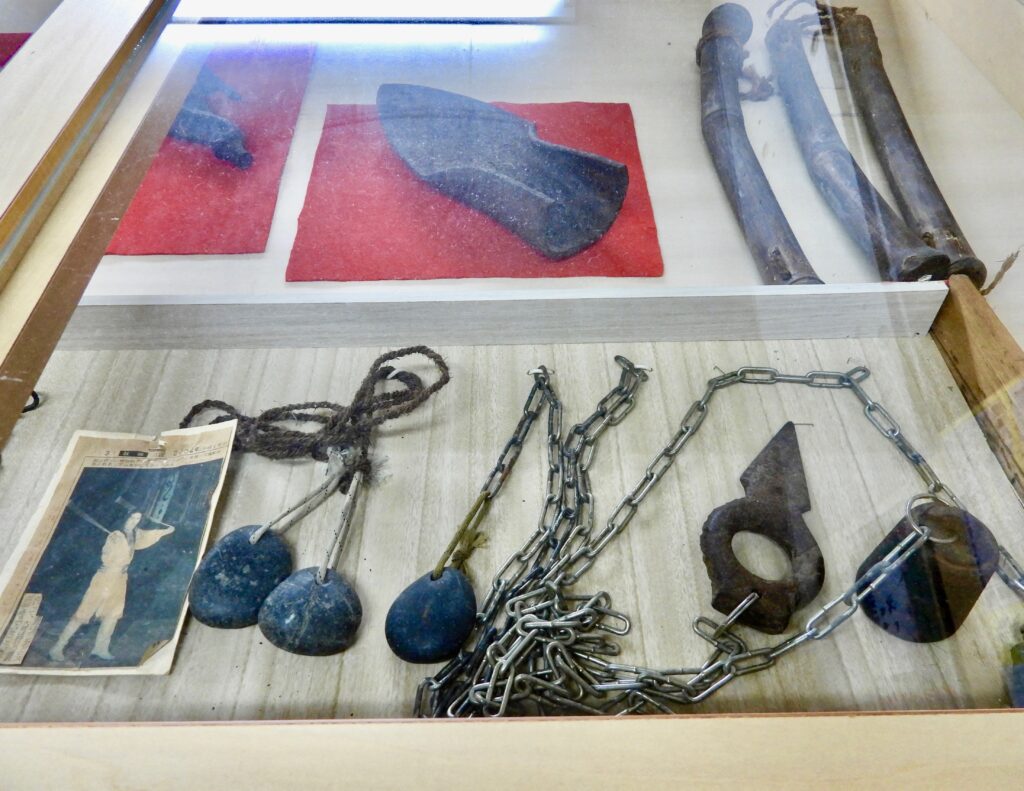
Various weapons used in Kobudo
(3) What is your favorite Waza and Kata?
Kyushojutsu for Waza and Suparinpei for Kata.
(4) What is your most impressive memory of your Sensei/(Shisho) ?
People who practice karate often have multiple Masters and this is normal. I have learned Goju-ryu from both Higa Seko Sensei and Fukuchi Seiko Sensei. Both of them were teaching at the same Dojo. Matayoshi Shinpo Sensei was also teaching Kobudo in the same Dojo. Imagine how lucky I was to be able to learn from such a trio of great Masters in the same place…!
If I heard that another Sensei was teaching Sai, for example, I would also go to his Dojo.
Higa Sensei used to be a school teacher, and I was also a school teacher. When Higa Sensei retired, he went teaching at a rehabilitation facility in Okinawa Prison. For a little while, I carried his bag and accompanied him. It was a social study for me. He was a tough man with strong words. How he spoke and how he chose words was very impressive. When he took off his jacket, I had to pick it up and fold it. At that time, there were no bags, so I wrapped it in Furoshiki (wrapping cloth), and when we walked down the street, I held an umbrella for him. It was very normal because you should never step on the Sensei’s shadow. This really existed back in those times.
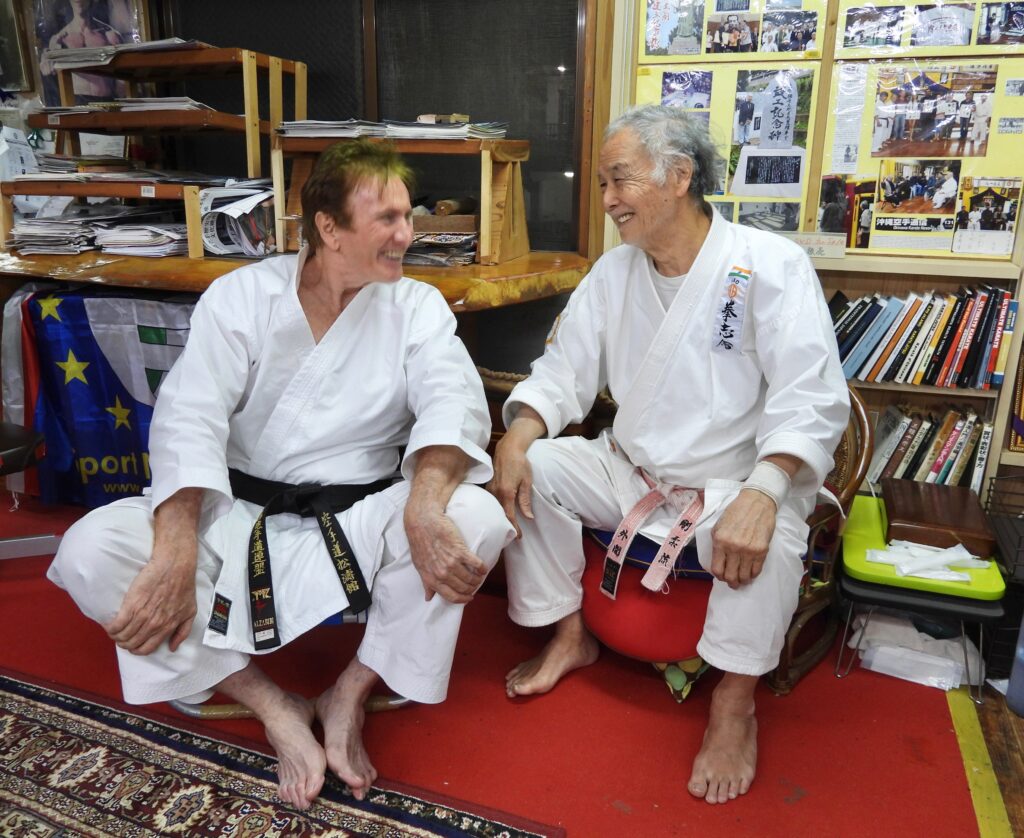
Daniel “the Karateka-therapist” and Hokama Hanshi, into a passionate conversation about the present and the future of karate. Serious Karateka can also have good laughs!
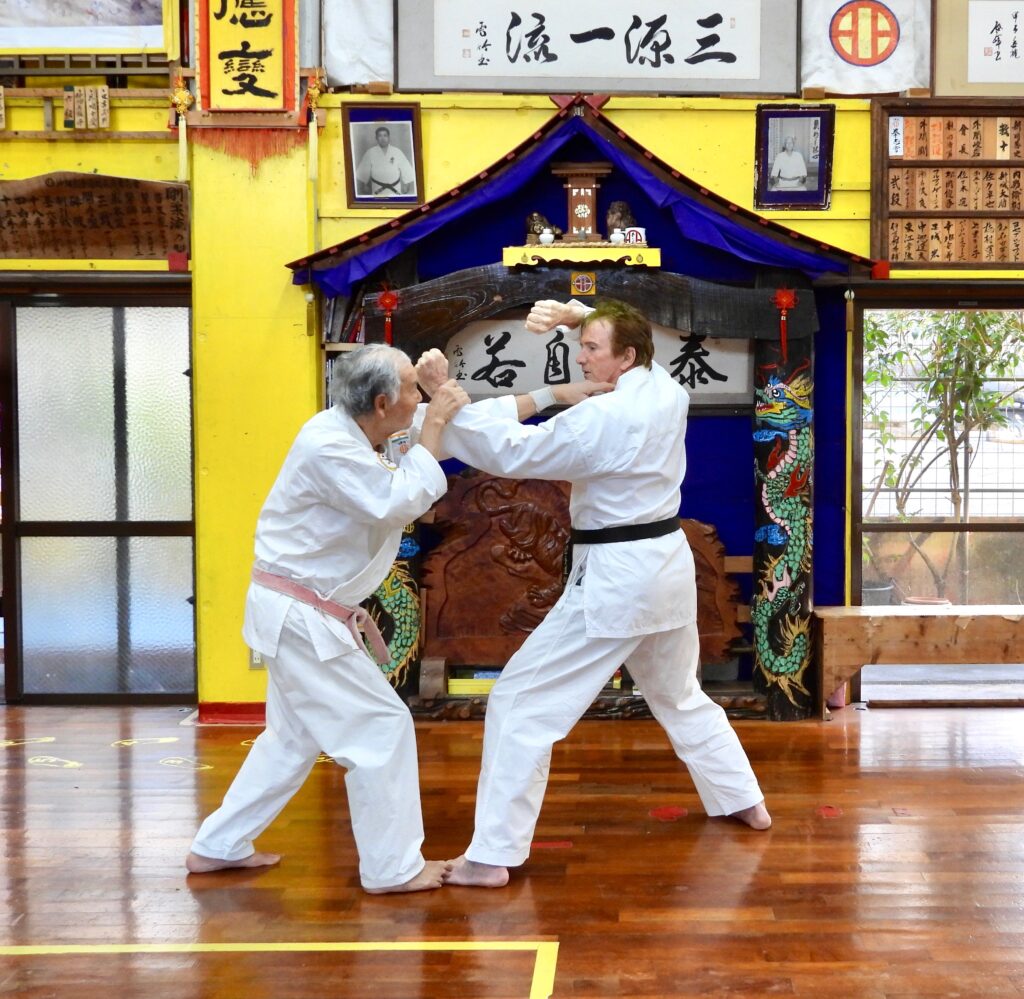
Hokama Hanshi demonstrating his special techniques to K.T. Daniel.

Yuko Takahashi Sensei is also training under the Master’s guidance!
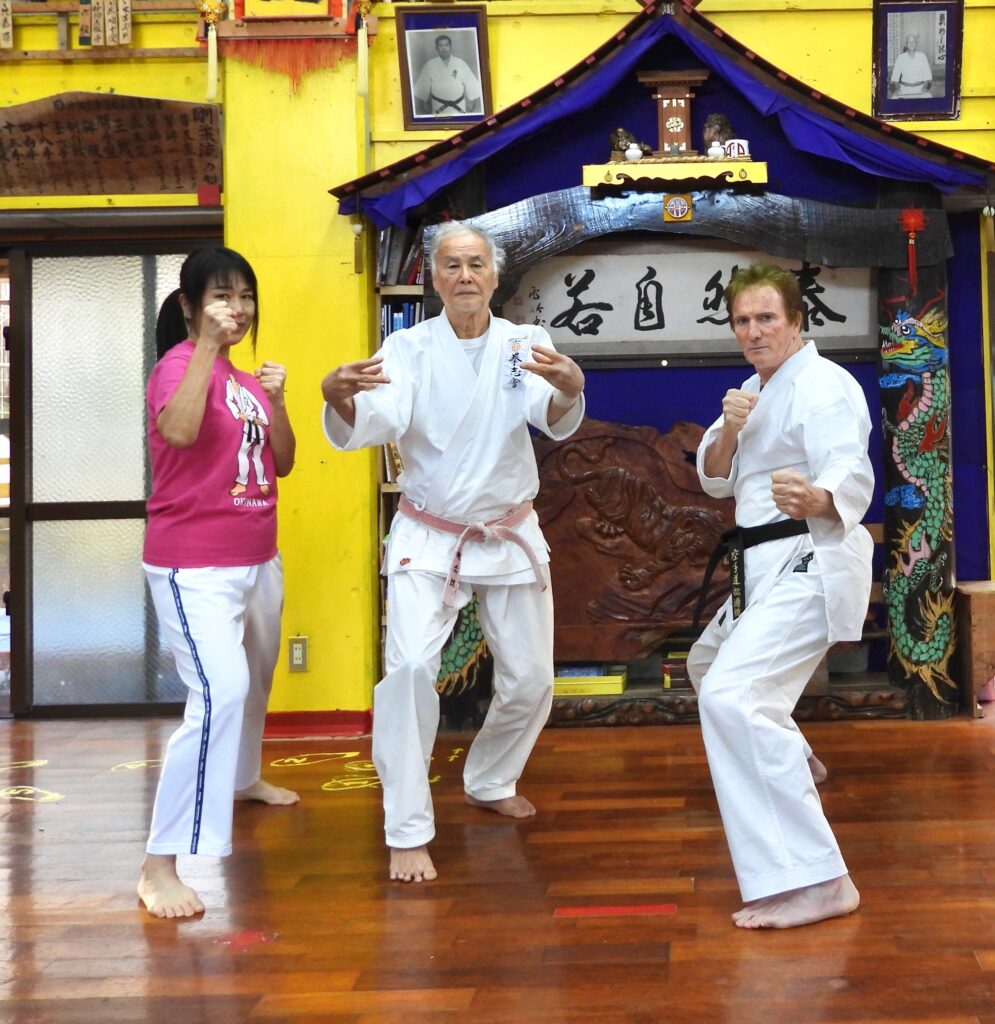
3 different “Kamae”
(5) What is the difference between Okinawa karate and Mainland karate?
Karate originated in Okinawa. However, some martial arts from Mesopotamia and Turkey had reached ancient India a long time ago. They continued to travel through the “Silk Road” and have spread to Quanzhou and Fuzhou in the Fujian Province of China. Finally, they were imported to the Ryukyu. These techniques have certainly influenced the root form of the ancestral Ryukyu martial arts; the “Te-i” and have become included into Okinawan karate.
Okinawa has been the Silk Road’s terminal stop. Martial arts from Southeast Asian countries such as Indonesia, Malaysia, Thailand, the Philippines, and Bali have also influenced Okinawa karate.
Okinawa, which was invaded by the Satsuma clan from Kyushu in 1609, became a “Han” (Territory) in 1870, and became a Prefecture in 1879. Soon after, Higaonna Kanryo Sensei opened the very first Karate Dojo in history! He taught Chinese martial arts which are the base of his Naha-Te. Until then, karate had been practiced in secret.
In 1922, Sensei Gichin Funakoshi was summoned by Mainland authorities to appear in order to officially exhibit karate there. It was the first time. Karate was then quickly taught as an academic system at the main universities. Federations were established as well as a rank system. This is the kind of karate that developed on the Mainland. It was a different Karate than the one we had in Okinawa.
Just as synchronized swimming requires beauty, karate at the Olympics required an aesthetic sense in the scoring method. My point of view is that traditional Okinawa karate is not beautiful, but sports karate is beautiful.
Karateka in Okinawa don’t like practicing in front of a mirror and using “Kime” (pause).

Old pictures from Sekō Higa Sensei’s Dojo “Karatedō Goju Ryu Shōdōkan”. (Photo left) The dojo entrance, where stands the young and tall Hokama student next to Shinpō Matayoshi Sensei. (Photo right) Sekō Higa Sensei teaching.
(6) Do you often teach to foreigners?
Yes, all the time! As I mentioned earlier, people of various styles come from 182 countries. I don’t care about the style.
I tell them; please ask me “why”. “Why” do you bend your fingers? “Why” do you rub your feet on the wooden-floor? “Why” do you open your palm? “Why” do you hold and so on, instead of just imitating. I want my students to understand the basics, because they came from a long way.
(7) What do you think about the global rise of karate today?
It’s very good! Karate, which was biaxial between Okinawa and the Mainland, is now triaxial. Okinawa karate and mainland karate run parallel to each other, and the world karate is now at the top. It’s a pyramid, so karate is strong. Karate is the most popular martial arts sport in the world.
――But Taekwondo is an Olympic sport?
Did you know that Taekwondo originated from Okinawa Karate? Gichin Funakoshi Sensei taught 4 Koreans, and they returned to their home country and taught it. Taekwondo became the national sport of South Korea and has only one federation. If Korea had four federations (like in Okinawa Karate), Taekwondo could not be an Olympic sport.
、お孫さん拳剛君-1024x890.jpg)
3 generations of Karateka. Grandson Kengo Hokama with his Dad
Tsuyoshi Hokama Shihan.
(8) What do you think about karate becoming a competitive sport, including the Olympics?
I think people who want to compete should do it. As for the Olympics, since it originally started in Greece, let’s have it happen in its home country! That would be fair for the Greeks and it would avoid politics, corruption, waste of money and destruction of the environment. For the Winter Olympics let’s have them in a place with a lot of snow. Also, the Olympic symbol shows 5 colored rings, representing 5 continents, but only 4 continents are hosting! It never happened in Africa? Rich countries are investing a lot of money for such a short event. I have visited Olympic villages a few years after and it was such a disaster! What a waste of money and what a toll on the environment! That extra saving of money should be collected by Greece and shared to feed the poor. There are now more than 800 million of hungry people in the world. I was born during the war and there was no food. I was searching for food in the garbage. So I strongly hope that we stop wasting.
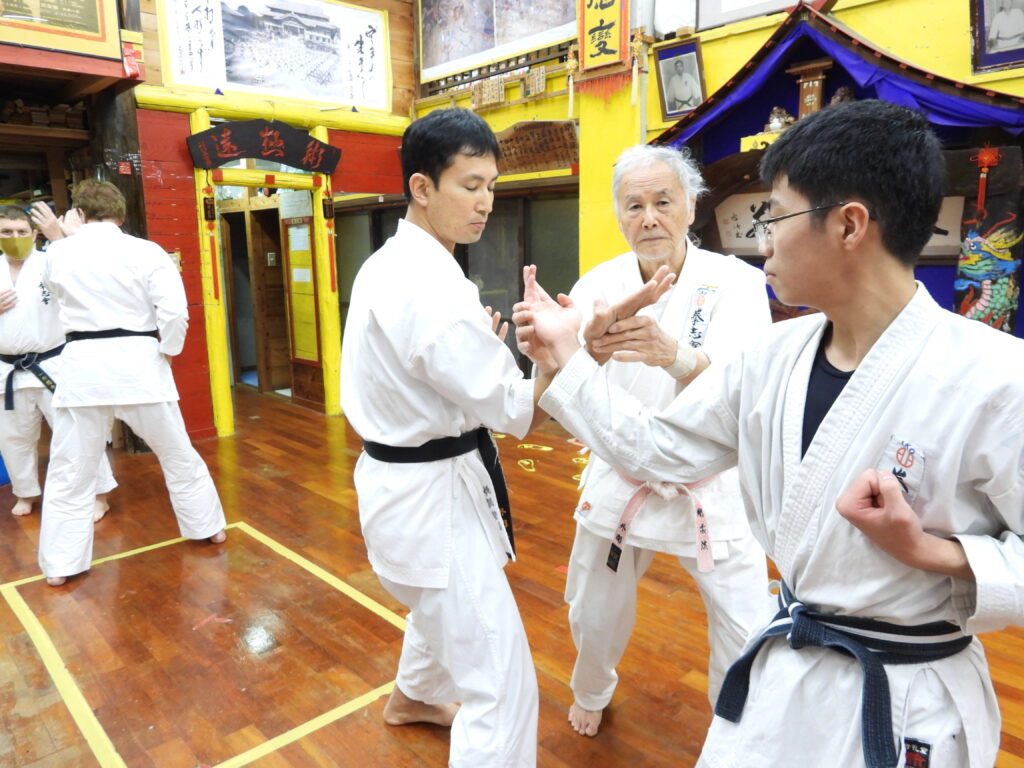
Teaching “Kakie”, a type of kumite from Okinawa karate.
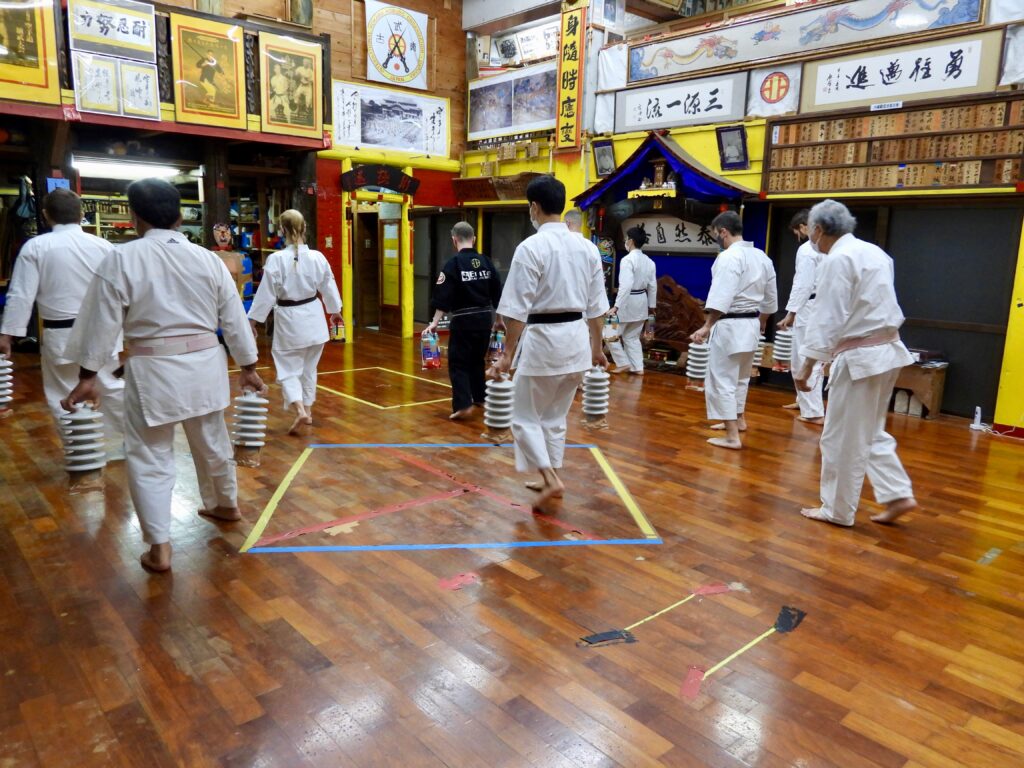
Classic training for the Kata “Sanchin”, which is a trademark of Goju-Ryu.
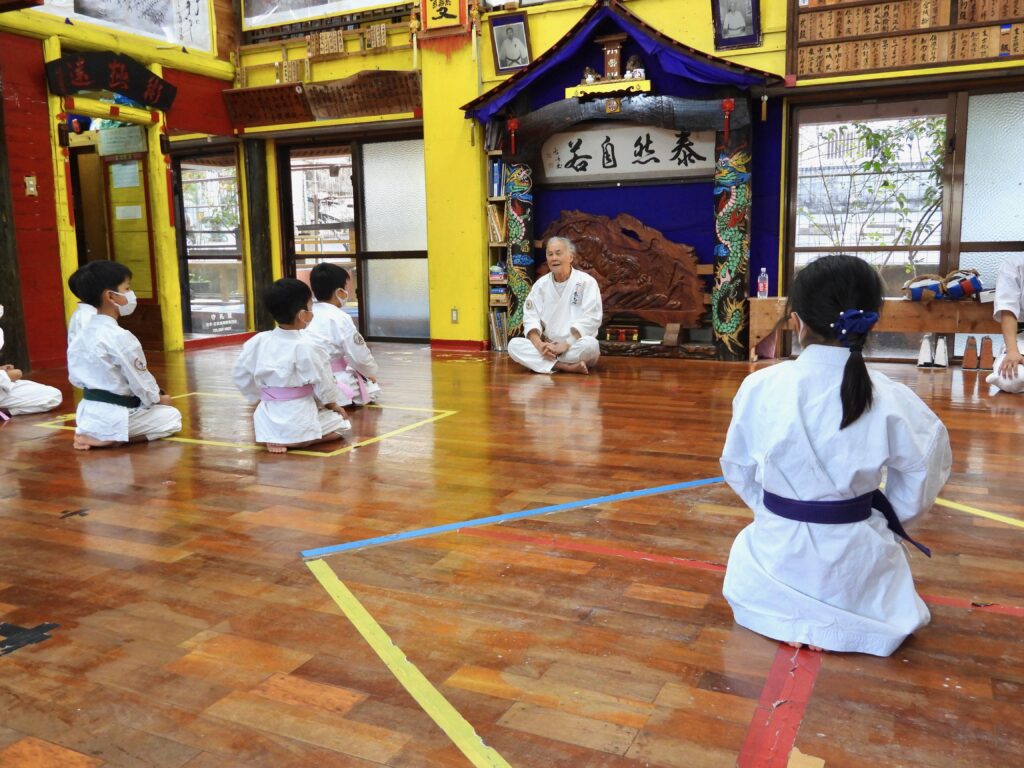
Children’s class. We can feel the special education.
(9) What is the significance of karate as a martial art nowadays?
Good question! Nowadays, young people are holding their smartphones even when walking down the street, and they are only looking at the screen. This is bad for the eyesight and it is dangerous not looking around! It also drives them to bullying and suicide.
Karate makes the mind and body healthy.
When I concentrate on karate, I sometimes forget myself. This form of special awareness is called Ritsuzen(立禅). Standing Zen as opposed to Zazen(座禅). I believe that by concentrating on a work, we are becoming aware and we can feel the significance of truly important things. Human relations, which are essentials, become normalized.
(10) How do you envision the future of karate?
Karate has now become “World’s Karate”. I don’t think there is any other traditional Japanese martial arts that has spread and developed from such a small island like Okinawa to the world. So, I can only wish it will continue and head in a good direction.
(11) Do you have any message for the world?
I hope that through karate, mental and physical health; regardless of age or gender, will become better. I wish that humans will show more love and will build a peaceful world.
(12) What does “karate” mean to you? How would you define karate?
I think of it as the epitome of life. Karate has brought me a lot of experience and happiness. If I hadn’t done karate, I wouldn’t be so connected to the world. When I was younger, I practiced until midnight sometimes and it made me happy. Now, I am mostly teaching, but when I teach a Kata and I see my students growing, it makes me happy too. I very much enjoy the mental interactions with other Karateka. It is a lot of fun. Because of karate, I was able to meet Daniel-san and Yuko-san and it makes me happy.
――Me too…! Because of Karate, I was able to meet Hokama Sensei. Arigato Karate and thank you very much Sensei for today’s interview and all the times you have welcomed me in your Dojo.…
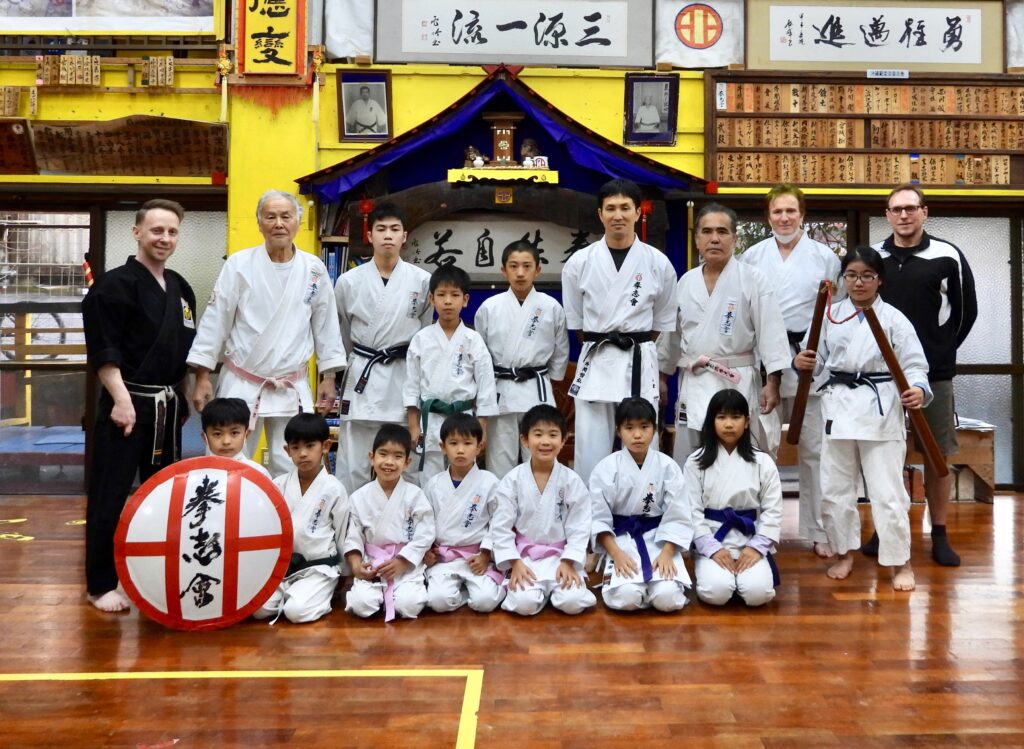
Group photo of the young Karateka.
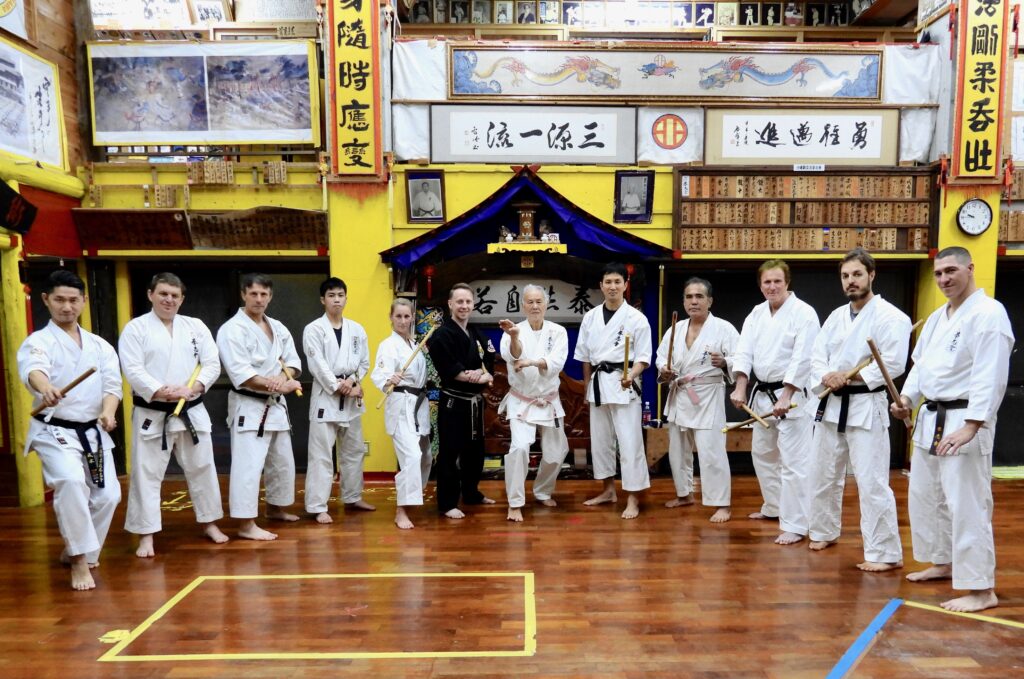
Members of Kenshikai and trainees from overseas.
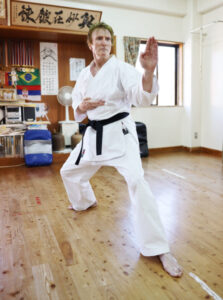
Daniel Mardon; the Karateka-Therapist
Creator of Aromapressure® method and physiotherapist with a valid US license, Daniel Mardon was born in Paris. One of his specialties is to teach and to perform lymphedema and subcutaneous tissue-damage care, after radiotherapy for cancer patients at medical institutions and subcutaneous tissue-circulation stimulation before and after surgery.
He was also a therapist for two famous soccer teams in Paris. Since 2005, he has focused on producing top-class hotel spas in Japan, as well as physiotherapy education and awareness-raising activities for health care professionals. Author of several books, among his major publications includes “The Physiology and Bodywork of Physical Therapy ” (Published by BAB Japan) and DVD “Daniel Mardon Aromapressure® Method ” (Pony Canyon). He regularly appears on television and radio shows, and has featured in numerous media publications.

